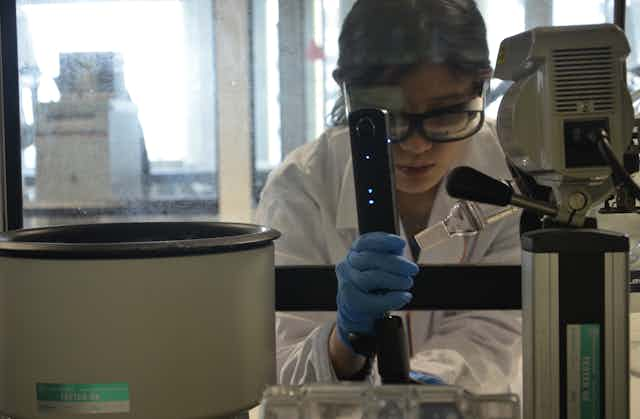In the ongoing quest to improve student engagement and learning outcomes, many teachers and academic institutions are exploring novel methods for producing and distributing educational videos. New tools and platforms offer exciting opportunities to make educational videos more fun and give them greater impact.
Educational videos have been around for decades, but they gained popularity in recent years as the growing availability of high-speed Internet, connected devices, and low-cost cloud storage platforms allowed educators to put lectures and other instructional materials online. With students now able to access course content at their own time and pace, many educators opted to “invert” their classrooms, reserving class time for group discussions, experiments, and other activities that help consolidate higher-order learning rather than just disseminate knowledge.
An increasing body of evidence suggests that the “inverted” or “flipped” approach to teaching provides a better experience for students, improving retention of course material and cultivating more general learning skills. It is applicable to all fields, but especially those in the natural sciences that require students to amass a large body of foundational knowledge. This includes abstract concepts and equations in physics, chemistry, and biology that sometimes require repeated exposure to master.
Inverted classrooms typically revolve around video lectures that are available online. Most of these videos are filmed in a relatively straightforward format, with the camera pointed directly at the teacher. Some might also incorporate slide-based images or even animation. Such videos can be effective, but they only scratch the surface of what’s possible. New videography tools now allow educators to create a much richer, more dynamic, and personal experiences for their students.
As an IT-for-teaching instructor in the department of chemistry at the National University of Singapore, I have always been intrigued by innovative techniques for creating inverted classroom experiences. And as an assistant director and core faculty at the Institute for the Application of Learning Science and Education Technology (ALSET), which conducts research on new pedagogies and instructional techniques, I am also committed to rigorous and scientific evaluation of what works. Below are some of the approaches I’ve tried and initial reflections on my experience with them.
New technologies and approaches
The lightboard: In many fields, instructors need to present equations, diagrams, and notes to their students during lectures. In educational videos, however, it is hard to write on a traditional whiteboard without obscuring the content and losing eye contact. One solution to this challenge is the Lightboard, a new technology pioneered by Michael Peshkin at Northwestern University that allows instructors to write their notes while facing students.
Instructor’s point-of-view filming (IPOV): With or without a lightboard, most educational videos are filmed from the perspective of students looking at a professor, but by using head- or chest-mounted cameras like Google Glass or the GoPro 5, educators also have the option to film instructional videos from their own perspective. This approach that has benefits in many contexts. In laboratory experiments, for example, students can get a clearer picture of how instructors handle equipment – a perspective that can improve familiarity with equipment and prevent damage from mishandling.
Virtual reality and 360-degree cameras: As virtual reality becomes increasingly popular, many instructors are building immersive video experiences for students. 360-degree cameras, which capture panoramic views of an environment, are a key tool for creating such experiences. In a 360-degree video or virtual reality app, viewers can choose the angle they seek at any given time, allowing them to engage more actively with the content (I recently reviewed two low-cost 360-degree cameras – the Ricoh Theta S and the 360fly – both of which are well suited for educational videos).
Drones: Unmanned aerial vehicles, colloquially known as drones, are another useful tool for creating educational videos. In my environmental chemistry classes, I’ve used them in exercises to find potential sites for soil sampling. Similar possibilities exist in other fields that require aerial surveys, such as public health and emergency medicine. One downside though is that drones can be expensive, and using them sometimes violates local laws and ordinances, so teachers and students should always use them with caution.
Videos on social media: Most students these days spend significant time on social media applications, in particular Facebook, Instagram, and Snapchat. By embedding educational videos in popular social media platforms, instructors can reach students on their own turf. However, social media platforms might be too distracting to support learning for some kinds of students, so more research is needed to ensure they are leveraged properly.
The limits of video
Even with the most innovative new filming and viewing techniques, educational videos have some limitations in the type and quality of the information they provide. In my own field of chemistry, for example, laboratory experiments are an essential part of the learning process. While some of these experiments can be filmed, nothing compares to the experience of being physically immersed in a laboratory environment and in the company of one’s peers.
New video techniques and platforms are getting better all the time at delivering content and bringing people together for group learning activities, but they still remain a complement – and not an alternative – to a well-rounded education.
The author presented the results of his work on the lightboard and virtual reality in the classroom at the second annual USPC-NUS Conference, which took place May 22-23, 2018, in Paris.

